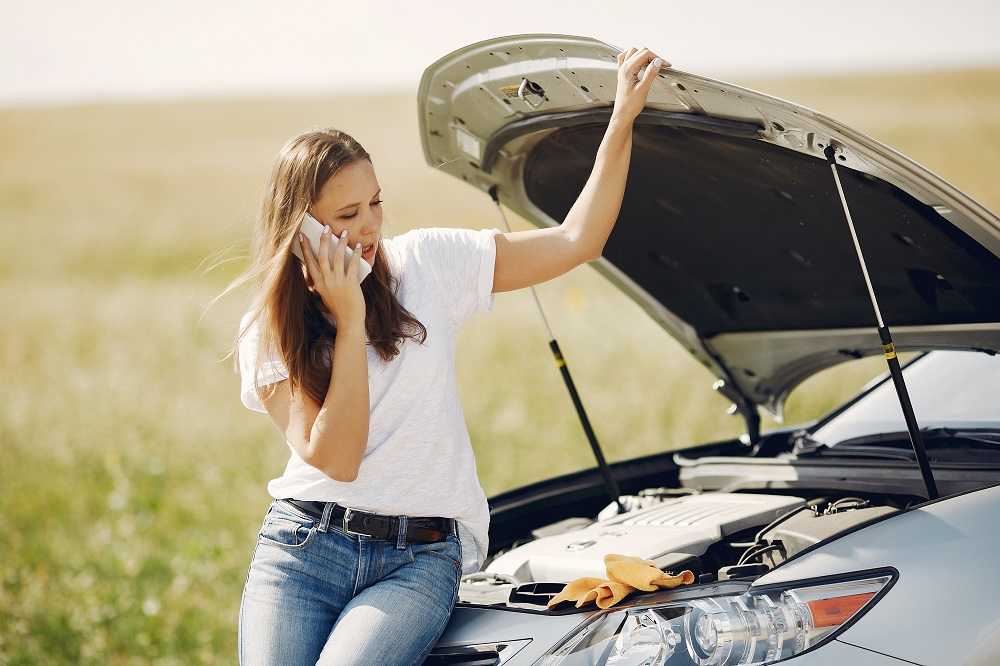Accidents in cars are difficult enough without having to deal with the added complications of driving a work vehicle. We’ll detail the steps to take after an accident in a company car, and review some basic rules governing company car use.
We’ll also explain who is responsible for damages and repair costs and if the employee can be fired for getting into a company car accident.
Do This Before You Get in a Company Car Accident
Having a company car is a great job perk, but privilege comes with responsibility. Whether your company car is owned or leased by your employer or you use your own vehicle for business purposes, employers expect employees to know and follow certain rules when driving a company car.
Review Your Company Car Policy
You need to understand and follow your employer’s rules for using a company car. Your company car policy most likely includes a section on what to do if you get in an accident in a company car. It likely details the specific steps to report an accident, as well as the employee’s obligations to cooperate with investigations, litigation, and company car accident mediation.
You can’t follow the rules if you don’t know them, so make sure you ask for your company’s car usage policy and review it. Here are some basic company car rules you can expect to find in most written policies:
Only Company Business
Most companies have a “business use only” policy so you can’t treat a company car like your personal automobile. That means you shouldn’t drive your company-issued vehicle to take care of personal matters or run errands during the work week or on weekends, days off, or holidays.
Only Authorized Drivers
If you’ve been given a company car as part of your employment, you can’t let other people drive it. Non-employee and other unauthorized drivers won’t be covered by the company’s group insurance. Most written policies even prohibit allowing passengers who don’t have a business-related purpose for being in the company vehicle.
Only Safe Driving
Employees should use extra caution when using a company car. Avoid texting or other distractions while driving. Do not drive under the influence of alcohol or drugs. Also, make sure the vehicle and its contents are securely locked and parked.
If an accident or damage was caused to the car and its contents due to the employee’s negligence, the employer may have grounds to terminate employment. Also, depending on the company’s insurance, employee negligence while using the vehicle also could impact coverage, and the employee could end up responsible for related damages or loss.
The policy will have a disciplinary section that lays out the consequences, including termination of employment, for failing to adhere to company policy.
Ask for Company Insurance Information
Ask your employer about its company vehicle insurance. Your employer should have a business automobile policy, which covers accidents that occur while driving a company car for business purposes. Also, ask if there’s an insurance information card or hotline number to call in case of an accident or emergency in a company car.
Steps to Take After a Company Car Accident
If you get in an accident driving a company car, don’t panic. Remember these simple steps.
Step 1: Stay Calm
Cool heads prevail in emergency situations. If you get in a company car accident, summon the leadership skill of remaining calm and collected.
Don’t yell or use profanity. Don’t be combative or blame others at the scene. Don’t discuss the accident with anyone at the scene other than the appropriate authorities.
Remember that you’re on the clock and you want to be sure your actions represent your employer well. So, take a deep breath, move a safe distance away from the wreck site, and start making calls.

Step 2: Call 911
The first thing you should do in any car accident is to call the police. If there are physical injuries, request an ambulance immediately.
Calling 911 is likely required by law and your company’s vehicle policy. Even if you think the incident is minor, most driving laws require that police be notified of an accident involving a vehicle if anyone was injured or if the vehicle damage exceeds the statutory threshold, which is typically less than $1,000.
Again, remember that you are on company business. When talking with law enforcement, be cooperative and truthful, but it’s important not to admit fault or accept responsibility for the accident.
Step 3: Get Witness and Scene Information
The police at the scene may ask the parties involved to exchange names, addresses, and insurance information. If they don’t, make sure you get the contact and insurance information of any other drivers. If passengers and witnesses were involved, get their names and phone numbers too.
Your company will want a copy of the police report for its review and to pass on to the company’s insurance provider. The reporting officers should be able to provide you with an official report number. Don’t forget to write down the names and badge numbers of the officers and any medical personnel at the scene.
Before leaving the scene, take photos of the cars, license plate numbers, and vehicle damage. Pictures of the scene, weather, and road conditions could prove helpful, especially if you need to perform a license plate lookup later on for insurance or legal purposes.
Step 4: Notify Your Company and Follow Procedure
In addition to calling the police, businesses generally require their employees to report company car accidents to the company immediately or as soon as possible. You’ll likely be required to provide a copy of the accident report or provide the report number.
You may be asked to fill out various forms relating to the accident. Your company will likely have internal accident report forms for you to complete. You may also be asked to provide a written account of the accident for your employer’s company car insurance provider.
Step 5: If Injured, File a Worker’s Compensation Claim
Worker’s compensation insurance is a type of insurance that provides monetary compensation and other benefits to employees who get injured or sick due to their job. Almost all employers are required by state law to have worker’s compensation insurance.
Worker’s compensation benefits typically include payments for medical expenses and lost wages. Depending on the extent of the injuries, these benefits can be long-term and possibly continue for life.
Step 6: Cooperate with Investigations and Legal Proceedings
You can expect your company and its insurance company to conduct formal accident investigations to determine coverage, cause, and compliance with company vehicle usage rules.
You might even be required to participate in legal proceedings, including working with company lawyers to give testimony at depositions or hearings.
The trick with accident investigations of company par accidents is that you are required to be honest and forthcoming, but you also need to be concerned about whether your conduct or involvement in the accident runs against company rules.
If you broke company rules or the law, and that’s what caused the accident, you could be legally liable for the accident or fired from your job. That’s why it’s crucial to know and follow your employer’s company vehicle use policy.
Who is responsible for damages and repair costs from a company car accident?
The good news is that an employee won’t be responsible for property damages or personal injuries resulting from a company car accident. The employer’s business automobile policy is there to cover the costs of accidents in company cars.
There are, however, exceptions if the employee engaged in reckless or unlawful driving, or if the employee was using the car for purposes unrelated to the business.
Can I get fired for getting in an accident in a company car?
If the behavior leading to the accident was reckless, unlawful, or violated company rules, the employee could be fired. The company car policy will likely have a section addressing the disciplinary action that can be taken against employees who violate company policies or rules.
If you think you violated company policy while driving a company car and got in an accident, situations like those may be worth hiring a lawyer for a traffic collision, as well as for any employer or insurance investigation.






